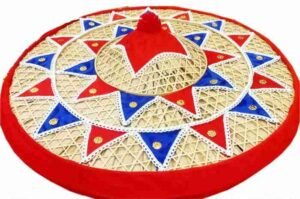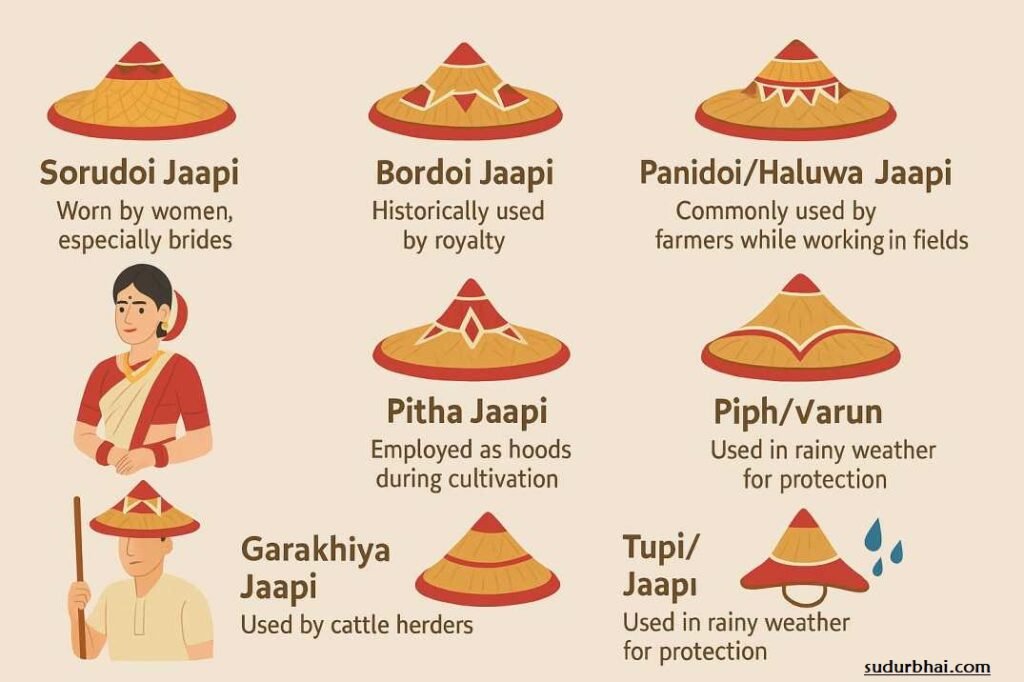1. Assam Jaapi
The Assam Jaapi, also known simply as Jaapi, is a traditional conical hat of Assam, India.

Jaapi Made primarily from bamboo and/or cane, along with tokou paat (Trachycarpus martianus), a type of palm leaf.
The term “Jaapi” is derived from the Assamese word “jaap”, meaning a bundle of tokou leaves.
2. Historical Significance of Assam Jaapi
Jaapis have been a part of Assamese culture for centuries.
Originally used by farmers and common people for sun protection.
Over time, ornate decorative Jaapis became symbols of status among royalty and nobility.
The medieval Chutia kings used Jaapis as cultural symbols, gifting them in diplomatic relations.
3. Cultural Symbolism of Assam Jaapi
The Jaapi represents Assamese identity and culture.
Prominently featured during the Bihu dance, a festival celebrating the Assamese New Year.
Used in ceremonies as a sign of respect.
Often displayed in homes as a welcoming symbol.
4. Types of Assam Jaapi

| Type | Usage |
|---|---|
| Sorudoi Jaapi | Worn by women, especially brides. |
| Bordoi Jaapi | Historically used by royalty. |
| Panidoi/Haluwa Jaapi | Commonly used by farmers while working in fields. |
| Garakhiya Jaapi | Used by cattle herders. |
| Pitha Jaapi | Employed as hoods during cultivation. |
| Tupi/Varun Jaapi | Used in rainy weather for protection. |
5. GI Tag Information
The Assam Jaapi was awarded the Geographical Indication (GI) tag on January 28, 2021.
This recognizes its unique cultural heritage and craftsmanship, specific to Assam.
6. Conclusion
The Jaapi is a symbol of Assam’s rich cultural heritage.
It serves practical, ceremonial, and decorative purposes.
The GI tag highlights its importance in preserving Assamese traditions and craftsmanship.
Let us know any further suggestions ,we at sudurbhai.com will be happy to hear from you in our comment section below !
